Temperature Sensors and Applications
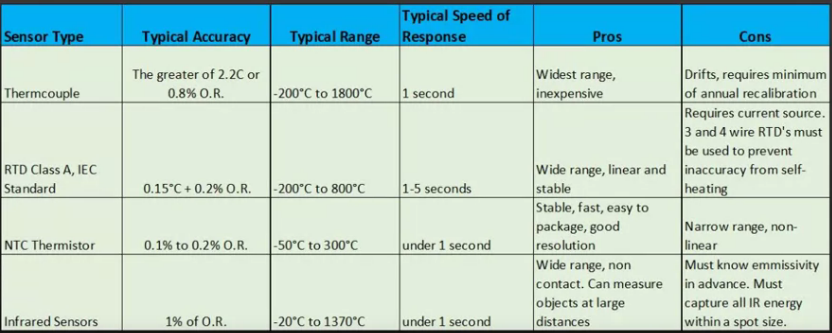
Thermocouple
- Versatile
- High span in one device
- Populatr in metallurgy and semiconductor processes
Resistance Temperature Detector (RTD)
- Precise
- Linear
- Stable
- Popular in pharmaceutical, biotechnology and chemical proceses
Thermistor (Sensors on a chip)
- small, easy to package
- used in phones and PCs
Infrared
- The only non-contact sensor
- Excellent for measuring temperature safely from a distance
Thermistors - characteristics:
- Most have a non-linear, negative temperature coefficient (NTC)
- The exact nonlinear curve or temperature versus resistance is highly material dependent.
- 25 degrees Celsius (Base resistance), mostly 2,252 Ohms ~ 10,000 Ohms
- Accuracies of +-0.1C ~ +-0.2C
- commonly used as overheating protection
- LCD's (to compensate display contrast)
NTC Temperatures vs Resistance Curve
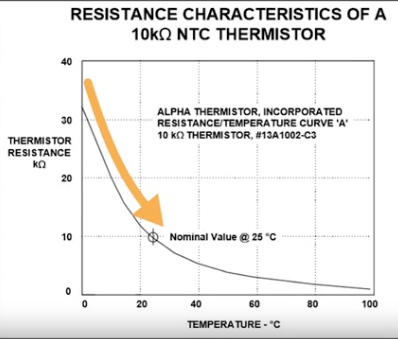
| Steinhart Hart Equation
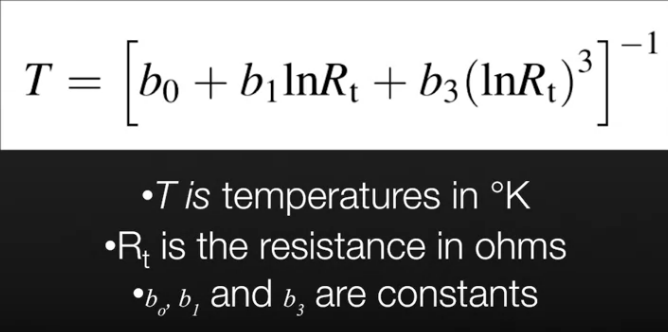
| Beta parameter equation
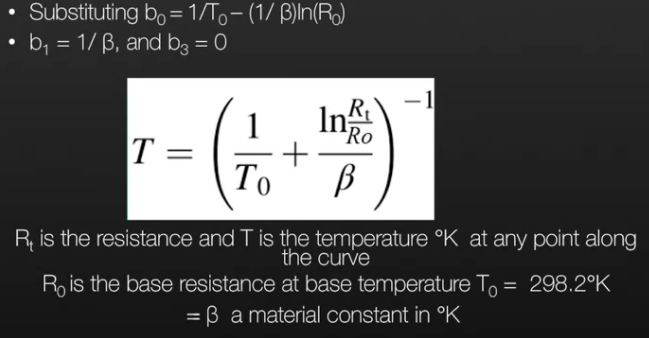
Resistance Temperature Detector (RTD)
- Traditionally, a coiled Platinum wire wrapped around a ceramic or glass core.
- Typically packaged inside a probe with a metal sheath
- Thin film RTD's consist of parallel traces deposited on a ceramic substrate
- Range of -200C ~ 800C
- No periodic calibration checks required
- Usuage for pharmaceutical and biotechnology plan
- RTD principle also used in gas flow sensors
- DIN/ICE 60751 is the global standard
- Temperature coefficient of resistance (TCR) of 0.00385 Ohm/C between 0 ~ 100 C
Resistance Tolerance
- Class A = +-(0.15 + 0.002 x T)C
- Class B = +-(0.3 + 0.005 x T)C
RTD vs. Thermistor Curves, PTC - Positive temperature coefficient thermistor
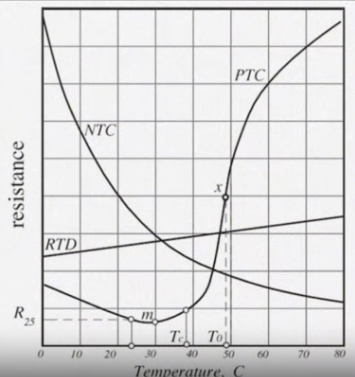
- RTD Linearization for Precise readings
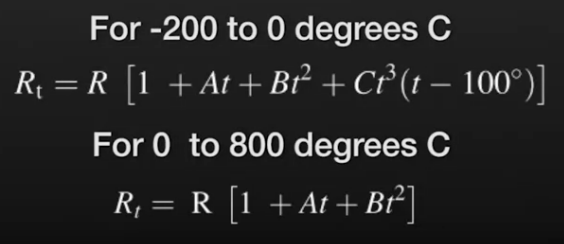
Page Source